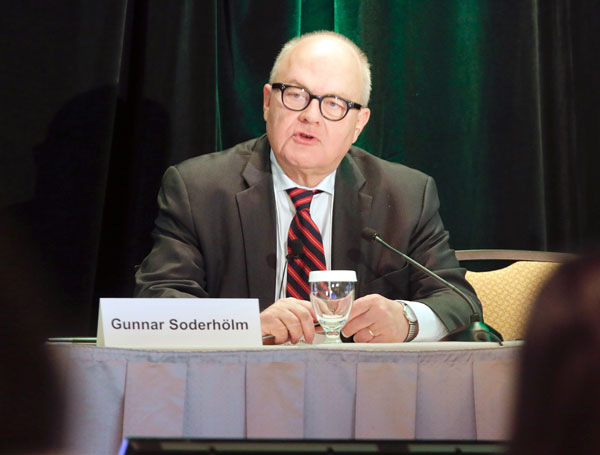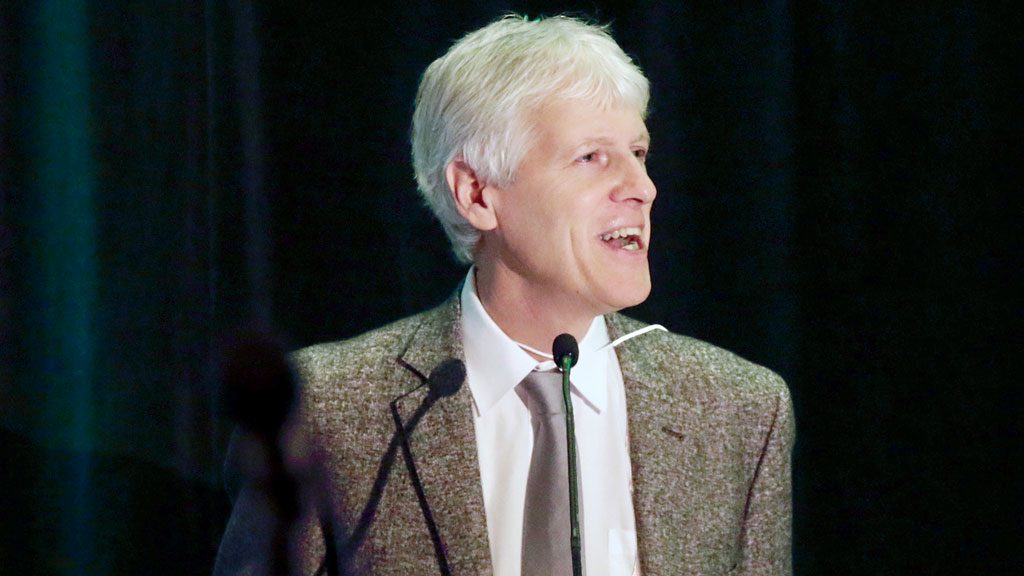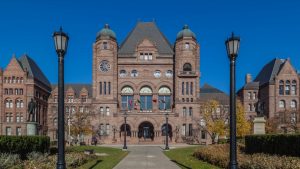Transportation policy need not be a quagmire where ideas are raised and quickly shot down or where priorities undergo a radical shift under a new government, delegates attending the recent Transport Futures conference in Toronto were told by a panel of international transit experts.
The Dec. 3 morning session at the event was devoted to presentations on best practices in London, Stockholm and San Francisco, with transportation managers in the first two cities chronicling the success of congestion charges in dramatically reducing congestion and earning buy-in from local residents.
In San Francisco, meanwhile, the transportation agency has been required to draw up extensive new regulations as it faces an onslaught of new mobility options, some springing out of nearby Silicon Valley, at the same time as it deals with the arrival of aggressive new Transportation Network Companies (TNCs) that threaten its anti-congestion policies.
Transport Futures founder Martin Collier explained he had invited the international speakers in part to provide hope for Ontario policy-makers who fear the province’s new Progressive Conservative government will abandon transportation strategies developed under the previous Liberal government.
“That is why I wanted to have this conference,” said Collier. “Many people think we are going in reverse now, so that’s why we had to hear again where they are going, not only on congestion charges but on climate change and smog and air quality, where we are also going in reverse on.”
Projects, delivery methods and agencies such as Metrolinx are all under review, climate change legislation has been scrapped and the new Premier Doug Ford has called for more subways to be built to regions that are not part of existing transit plans.
Collier also recalled how a road toll plan from Toronto Mayor John Tory was rejected by the former Kathleen Wynne government.
“Road pricing is not going to happen because it looks like a tax, and this government and the previous government said we are not going to tax you no matter how much infrastructure costs, because tax is a bad word, but maybe we can do something on environmental issues, you can do low emission zones,” said Collier.
Gunnar Soderholm, the head of Stockholm’s Environment and Health Administration, described how the city was met with strong opposition when a congestion tax was originally proposed in 2002. The system features 18 charging points located on arterials leading into and out from the inner city. A pilot project was undertaken in 2006, a referendum then held where citizens voted in favour of the program, and the scheme introduced in August 2007 with relatively low fees — the public awareness campaign stressed reducing congestion and improved air quality.
Soderholm said the immediate reaction was astonishment as citizens looked at empty roadways that previously had been packed.
As for results, the congestion charges have resulted in a 20-per-cent decrease in traffic, a major decrease in emissions and better air quality.

“People understand if you are not running it for the money, but are running for environmental reasons, people respect this after awhile,” said Soderholm.
“People changed their minds once they saw what happened. People liked the city with less traffic. They saw this was not the end of the world.”
Stockholm’s congestion tax is supplemented by such other measures as an accessibility strategy, a cycling strategy, clean cars, charging infrastructure, EV plug-ins and low emission zones (LEZs).
As explained by teleconference by Judith Hayton, strategy and policy manager with Transport for London, the Central London Congestion Charge scheme introduced by that city in 2003 was aimed at reducing congestion and encouraging modal shift. The plan was accompanied by significant changes in bus, train and underground capacity.
The numbers in London, similar to Stockholm’s, indicate a radical shift in consumer behaviour. Traffic entering the zone is down 27 per cent, or 80,000 fewer cars.
“It has been very successful in decreasing congestion as well as providing better transit services, cleaner air and safer roads,” said Hayton.
London Mayor Sadiq Khan, elected in 2016, is pushing an aggressive quality of life plan that includes lowering exposure to particulates, LEZs and a goal of 80 per cent of trips undertaken by foot, bike or public transit by 2041.
“These are very ambitious objectives and will guide most of the work we do,” said Hayton.
San Francisco, with its 2.1 per cent unemployment rate fuelled by tech sector expansion, rocketing housing prices and a congested inner city, has been making progress in combating congestion through the progressive pricing and regulatory policies of the San Francisco Municipal Transportation Agency (SFMTA). Collier described the city as “ground zero” of the next wave of multi-modal transportation that includes carshare, rideshare, electric scooters, electric mopeds, private buses for tech workers — even three-wheeled covered bicycles, new on the scene.
Edward Reiskin, SFMTA director of transportation, laid out the agency’s aggressive transportation plan that includes a goal of 80 per cent of all trips by sustainable modes by 2030.
But those well-laid plans are being crimped by the TNCs, such as Uber. There are now 170,000 TNC trips on a typical weekday representing 15 per cent of intra-city trips. A report released in October found the TNCs accounted for approximately 50 per cent of the rise in congestion in San Francisco between 2010 and 2016.
“It is definitely working against our policy goals, our transit goals, our safety goals, our climate goals,” said Reiskin. “It is certainly siphoning some ridership.”
The answer to the problem is pricing, he said, which would entail legislative changes beyond the city’s jurisdiction.
The message to Toronto, said Collier, is to prepare for another transit challenge among many.
“Reiskin is basically saying, ‘get ready.’ We can learn from these other cities that have already been through it. We are lucky, we are not the first,” Collier commented.










what about the car/ trains that are used from England to France?
An alternative to the High Speed Train.